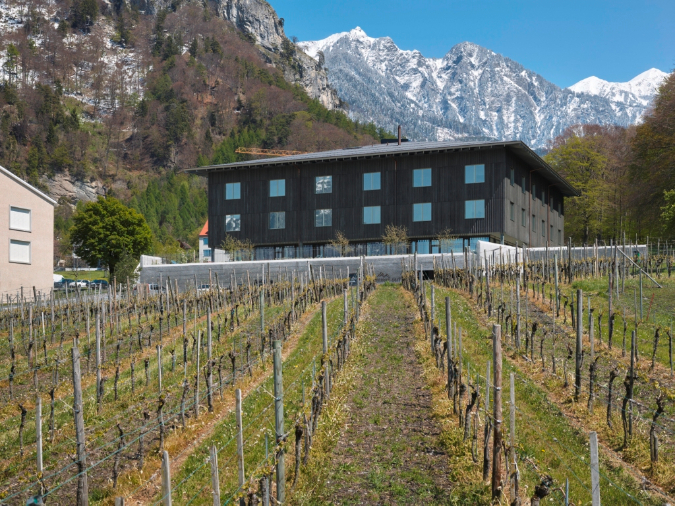Tags
With the opening of the Klinik Gut in Fläsch in 2017, an architecturally and technologically innovative project was realized. A distinctive feature is the carbon concrete facade with a wood-like surface texture, which gives the building a modern yet warm appearance and sets new standards for the use of carbon concrete in building construction.
Project Discription
The architectural concept was developed by the renowned office Bearth & Deplazes Architekten AG from Chur, known for its contemporary and context-oriented architecture. The facade elements were prefabricated and installed by Sulser AG, which produced all carbon concrete components at its own facility.
The façade combines aesthetic quality and functionality: while the profiled surface with its wood texture creates a natural and inviting character, it remains durable and permanently color-stable – unlike real wood, which weathers and turns grey over time.
Technical Details
- Number of facade elements: 2,288 pieces
- Dimensions: lengths from approx. 3.7 m to 1.4 m | width approx. 20 cm | thickness 2.5 to 6 cm
- Reinforcement: custom-shaped carbon grid reinforcement solidian GRID Form Q95-CCE-38
- Material: fiber-reinforced concrete C30/37
- Facade area: 1,147 m²
- Surface: profiled wood-like structure without weathering effects
- Anchoring: undercut anchor system
Durch die schlanken und leichten Carbonbetonelemente konnte eine effiziente und zugleich hochwertige Fassadenlösung umgesetzt werden, die sowohl ästhetische als auch bauphysikalische Anforderungen erfüllt.
Project Partners
- Client: Gut Immobilien AG, Balzers
- Architect: Bearth & Deplazes Architekten AG, Chur
- Precast production / concrete works: Sulser AG
- Reinforcement: solidian & kelteks
- Design & structural engineering: Sulser AG, supported by solidian & kelteks
Significance & Outlook
The facade of Klinik Gut in Fläsch represents a pioneering application of carbon concrete in facade construction and demonstrates the potential of this innovative material. In addition to its architectural benefits, the solution stands out for its low weight, high durability, and corrosion resistance. The project impressively highlights how carbon concrete can open up new possibilities for sustainable, long-lasting, and architecturally sophisticated building envelopes.









